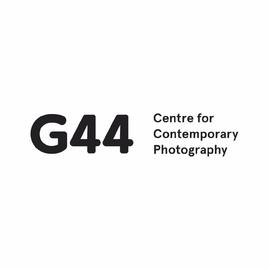The Gallagher and Whatmough families have histories that are closely intertwined. The Gallaghers migrated to Hamilton, Upper Canada in 1836, then lived in Rochester, New York for four years before settling in East Flamborough, Upper Canada. Two Whatmough men, Charles and Isaac, came to Upper Canada in 1858 and 1863, from the area around Manchester, England. Their parents and other family members seem to have moved back and forth between the two counties, with most settling in the Toronto/Burlington/Hamilton, Ontario area. The Gallaghers appear to have been farmers, in the main, while the Whatmoughs produced a number of architects and businessmen. Howard Gallagher (1897-1987) was active in the Flamborough and Waterdown Agricultural Society, Gordon Gallagher (1900-1985) was on the town planning committee which prepared Burlington’s first Official Plan, and served as deputy reeve and reeve of Burlington. Percy Gallagher (1901-1987) was a builder and developer who registered the White Oak Manor commercial and residential development survey, Plan 1124, in 1958. Charles T. Whatmough (1837-1885) opened a hardware business on King Street East in Toronto. Arthur Edwin Whatmough (1884-1971) was an architect who designed residential buildings in Toronto in the Arts and Crafts style until the Great Depression (1931). His son, Grant Alan Whatmough (1921-1999) was a naval architect and designer of private houses throughout southern Ontario. Isaac Abraham Whatmough (1842-1911), the second in his family to emigrate, worked in Toronto and Simcoe, where he joined the Norfolk Rifles, and spent some time in Chicago during the Civil War before returning to Toronto to work in his brother Charles’ hardware store.
Gallery 44 Centre for Contemporary Photography is a non-profit, artist-run centre dedicated to photography and located in Toronto. Originally known as The Niagara Street Photographers’ Centre and Workspace of Toronto, the collective ran a gallery space called Gallery 44. The organization was also sometimes known as Photo 44. The collective was founded in September 1979 by a group of photographic artists with a need for shared darkroom and studio space and to create an environment supportive of photography and its evolving practices. They were incorporated in October 1984. The collective offers opportunities to its members, national and international artists to exhibit and publish their work and also provides educational programming, non-commercial traditional darkroom facilities and digital imaging services.
Gallery 44 Centre for Contemporary Photography was originally located at 109 Niagara Street, where they first began mounting exhibitions and offering photography workshops. In 1986 they moved to 183 Bathurst Street to provide larger facilities to their growing membership. The Education in the Schools program was initiated in 1987 to provide photographic education at the elementary and secondary school levels. In 1994, they moved to their current location at 401 Richmond Street West. 401 Richmond is a hub for the local arts community housing artist-run centres, galleries, arts organizations and artist studios. Gallery 44 Centre for Contemporary Photography continues to support the photographic community by offering affordable darkroom rentals, digital imaging services, exhibition space, workshops, artist residencies, print sales, hosting portfolio reviews and publishing catalogues and books.
Gallery Moos was opened by Walter Moos in May 1959 at the corner of Avenue Road and Davenport Road in Toronto. Early in 1963 it moved to Yorkville Avenue, becoming one of the first arrivals in what was to become a significant gallery district of the city, and subsequently prospered there for some 30 years. In July 1992 the gallery moved to its current location at 622 Richmond Street West.
Robert William Geary (fl. 1913-1933) lived in Niagara Falls, Ontario. According to a note in the inventory, in 1913 the Geary family lived at 33 Barker Street. Geary was the third president of the Lundy’s Lane Historical Society (1908 1932), and was the author of Historical sketches : a memorial of the hundredth anniversary of the War of 1812-14, 1912. He died in June, 1933.
The Gershon Iskowitz Foundation was started by artist Gershon Iskowitz in 1985, with the mandate of awarding the Gershon Iskowitz Prize to a mature practising artist; since 2007 the Foundation has partnered with the Art Gallery of Ontario to administer the Gershon Iskowitz Prize at the AGO.
Len Gertler (1923-2005) was a planner, administrator, author, and university professor, whose areas of study included planning, and public policy. Gertler was born in Montreal, Quebec, and was educated at Queen's University, McGill University, and the University of Toronto. Throughout his career he held a wide variety of positions. Len Gertler served as Director of the Edmonton District Planning Commission, and also held the position of Deputy Commissioner of Planning for the City of Toronto. In 1966 he became a professor at the University of Waterloo, establishing a new program in Urban and Regional Planning. He was also involved in establishing the University of Waterloo's Faculty of Environmental Studies, and became the first Director of the School of Planning. Gertler was the coordinator and author of the Niagara Escarpment Study in 1968. His international work included assignments in Indonesia, Jamaica, India, Japan, and Uzbekistan. Gertler was a member and Vice-Chair of the Ontario Environmental Assessment Board, from 1990-2001. The Canadian Institute of Planners' Award for Planning Excellence in 2001 was named in honour of Len Gertler.
George Grace was born January 15, 1917. He moved to Sudbury, Ontario from Toronto on December 15, 1939 and began work as a sports reporter for The Sudbury Star in 1942. After serving in World War II, Grace returned to reporting for The Sudbury Star. During the 1950's, Grace developed polio which left his right hand atrophied and forced him into a wheelchair for several years. With the help of his wife Isobel, his condition improved and he continued writing sports articles. Grace was eventually promoted to Executive Editor before retiring in 1980. Ten years later, Grace began a regular sports column entitled 'Looking Back' which ran for about a decade. His final article appeared in the paper December 31, 2000. George Grace passed away December 23, 2007 at the age of 90.
